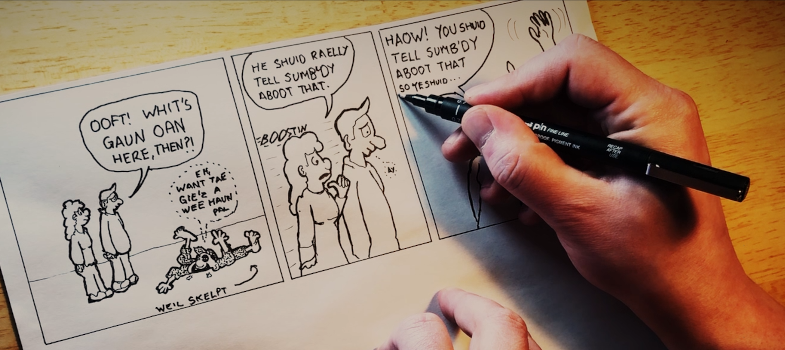Unit 2 Application Task
Hoping this is the right place to post!
I taught a double period lesson about the influence of the Anglo-Saxons on the development of Scots, drawing attention to the stronger influence in our area (Scottish Borders / Midlothian) which we can see in place names and words used / linguistic features. Tasks included answering questions following watching some clips about the topic in Scots; carousel discussion tasks; and a tarsia puzzle task. Students then had to produce some creative writing based on the Anglo-Saxons, in which they were encouraged to incorporate Scots. This was aimed at a mixed ability S4 group.
The lesson went well overall, and the creative task went down better than expected (slightly fewer eye-rolls than usual at being asked to actually use their imaginations!). Despite spending quite a lot of time discussing it, I was not confident that pupils had fully grasped that the etymology of the Scots words we had discussed this lesson was different - not just "accented English" - as they sounded more similar to English than words we had discussed in previous lessons. We will come back to this in future. Reactions to my speaking Scots to give instructions were very mixed... I could talk about the whys and wherefores of that for a whole blog post!
What was really interesting was the ways in which different learners approached the creative task. More able learners with higher literacy levels tended to focus on the history elements of the lesson, and were far less likely to fully incorporate Scots into their work without significant scaffolding (e.g. word banks, examples) and encouragement. Learners who often struggle more with literacy included fewer elements of the history we had discussed, but were more likely to incorporate Scots in their creative work far more richly. The focus of their work was more on the language and interactions between characters than on historical information. There was no real correlation between literacy levels and engagement levels, as I would usually expect with a task such as this, which was very interesting. This seems to back up the ideas put forward in the module reading that using Scots in the classroom can have an inclusive effect that can begin to break down barriers for some learners (Education Scotland report on Scots in the classroom, 2017 / Ruiz / discussion of Vygotskian constructivism). Certainly, different learners were finding success in completely different ways.
I would be keen in future lessons to revisit creative writing tasks such as this with an express emphasis on using as rich and varied Scots as possible - I want to explore the ways it flips the usual academic hierarchies of the classroom a bit more!
